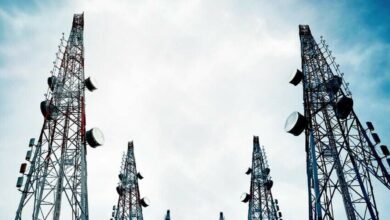Beyond 2020 – What’s Ahead for 5G?

The whole world is experiencing the impact of COVID-19, but the Telecom sector has witnessed the most
significant impact. As governments impose restrictions on movement, people are spending more time at home for work and leisure. Hence, compelling the Telecommunication companies to provide increased network resilience while examining how COVID-19 impact their planned investments, particularly in 5G. Telecom companies are making changes to benefit customers, who during this time, need networking services more than ever.
Beyond 2020 – What’s Ahead for 5G?
The COVID-19 Pandemic has established the need to strengthen the digital structure to better prepare societies for future disasters and to make systems more robust and defensible, guaranteeing a better and more effective strategy
The buzz around 5G has been building up for quite some time now. With a speed of a hundred times faster than that offered by existing 4G networks, the 5G technology will not be less than a revolution. Where 3G/4G provides 3GHz to 6GHz spectrum, 5G brings the millimetre spectrum from 6GHz to up to 300GHz, offering much more bandwidth. The whole process that new technology promises to deliver is to boost up the ‘Internet of Things’, the ever-growing network of various internet-enabled appliances and machines. The COVID-19 Pandemic has established the need to strengthen the digital structure to better prepare societies for future disasters and to make systems more robust and defensible, guaranteeing a better and more effective strategy.
South Korea, US, China, UK and Germany are offering both 5G services and 5G compatible devices to consumers
Keeping in mind the hype of 5G technology, many countries around the globe are now working on it. There is a total of five states that are making use of 5G technology. South Korea, US, China, UK and Germany are offering both 5G services and 5G compatible devices to consumers. India is also hopeful of launching the 5G technology either next year or in 2022. At the same time, Pakistan’s telecom sector has to transition from regulated state-owned domination to a deregulated competitive organization. Substantial foreign investments aid this transition and the development of the telecom sector.
In January 2020, Zong and Jazz completed 5G trials after getting six-month licenses from Pakistan Telecommunication Authority (PTA). The capacity of LTE infrastructure and the lack of compelling use cases for 5G suggests that network operators are not yet pressed to launch commercial services. Zong has demonstrated its `fifth generation` (5G) mobile technology with a speed of over 1.5 Gigabytes per second (Gbps). On the other hand, Jazz has achieved an average download speed of 1,452Mbps and upload speed of 68Mbps along with booming HD voice and video calls. Jazz is hopeful regarding the launch of 5G that it would meet the evolving needs of tomorrow’s customers.
The capacity of LTE infrastructure and the lack of compelling use cases for 5G suggests that network operators are not yet pressed to launch commercial services in Pakistan.
Telenor Pakistan has also jumped in the race in March. It established the fastest cellular 5G test data connection in the country, achieving connectivity speeds greater than 1.5 Gbps. The government of Pakistan has not announced when it will grant the necessary regulatory approvals for the commercial launch of 5G technology.
However, the Ministry of Information Technology and Telecommunication has organized an advisory committee to define the terms for an auction of compatible spectrum. However, the COVID-19 Pandemic has lessened the speed of work and created many other issues for the telecom companies to cope up. Despite the increasing use of the internet, the telecom operators are facing a decline in revenue. Telenor Pakistan has faced 11% decline in subscription and tariff till the second quarter of 2020 due to the COVID-19 outbreak. The gross subscriber intake declined significantly in April and May, leading to a loss of 1.4 million subscribers in the quarter. Similarly, Jazz has also faced a decline in revenue which is 7.9%. During the second quarter of 2020, the revenue was Rs. 47.1 billion as compared to the Rs. 51.1 billion.
The COVID-19 Pandemic has lessened the speed of work and create many other issues for the telecom companies to cope up
Digital financial services revenue of Jazz also faced a decrease of 14.9% YoY because of the lockdown which led to less economic activity with the momentary fee removal on money transactions by the State Bank of Pakistan, representing a substantial drag on revenues. PTCL Group’s revenue of Rs 62.9 Billion for the halfyear t is lowered by 5% as compared to the same period of last year due to the COVID-19 outbreak.
The outbreak of the COVID-19 has put a significant impact on production and supply chain. During the coming year, the telecom sector to various degrees is likely to experience a downturn in mobile device production, while it may also be difficult for network operators to manage workflows when maintaining and upgrading existing infrastructure. On the consumer side, spending on telecoms services and devices is struggling from the economic effect of large-scale job losses and the consequent restriction on disposable incomes. However, the crucial nature of telecom services, both for general communication and tool for homeworking, has equalized the pressures.
During the coming year, the telecom sector to various degrees is likely to experience a downturn in mobile device production, while it may also be difficult for network operators to manage workflows when maintaining and upgrading existing infrastructure
Energy is a key network cost item that accounts for 20-25% of network cost for 4G operators. High performing 5G network will require even more energy – up to 140% more in some deployment scenarios. So, implementing 5G in the country will cost 2-3 times more energy cost than 4G. No doubt, high-band spectrum will increase the speed but mobile operators will need to increase their infrastructure investment significantly to overcome certain limitations especially in the more populated areas.
According to a report by Greensill in 2019, the global cost of 5G infrastructure will run to $2.7 trillion by the end of 2020. Also, the overall 5G network cost is far more than the traditional 2G/3G/4G operators which surely lessen the speed of 5G launch in the country to some extent.
According to a report by Greensill in 2019, the global cost of 5G infrastructure will run to $2.7 trillion by the end of 2020
Over the past decades, Pakistan is moving towards a more digital society and has massively embraced the digital lifestyle. 5G will bring more significant and long-term improvements to Pakistan’s economic transformation, social progress, and in the livelihood of people. 5G is expected to have an optimistic impact on healthcare, technology, farming, and education sector of Pakistan.
The global Pandemic has effected economies all around the world, and this has been an essential sign of how crucial digital infrastructure is not only for development but for situations relating to future crisis
The global Pandemic has effected economies all around the world, and this has been an essential sign of how crucial digital infrastructure is not only for development but for situations relating to future crisis. It is also well understood that 5G services will not only faster the internet speed; it will again revolutionize the internet of things and Artificial intelligence. So, bringing 5G technology in Pakistan will create better economic opportunities and will help in cost-saving if it is used wisely. But keeping in mind the current situation, the launch of 5G could be delayed. But, the government is quite optimistic in bringing the 5G services in the country very soon without any delay.
Pakistani government is quite optimistic in bringing the 5G services in the country very soon without any delay
PTA Taxes Portal
Find PTA Taxes on All Phones on a Single Page using the PhoneWorld PTA Taxes Portal
Explore NowFollow us on Google News!





